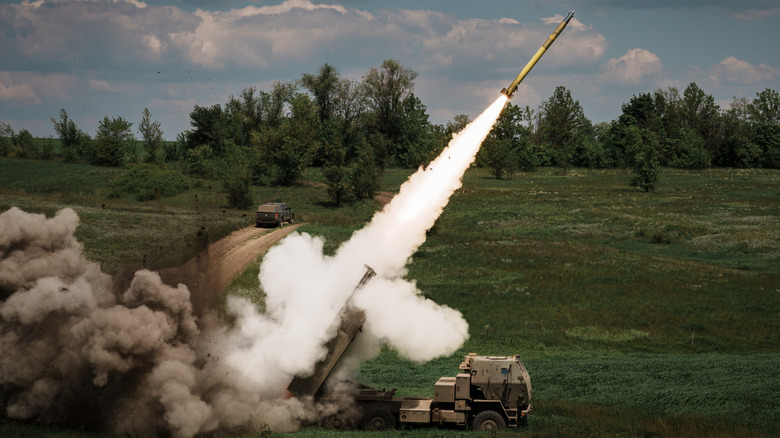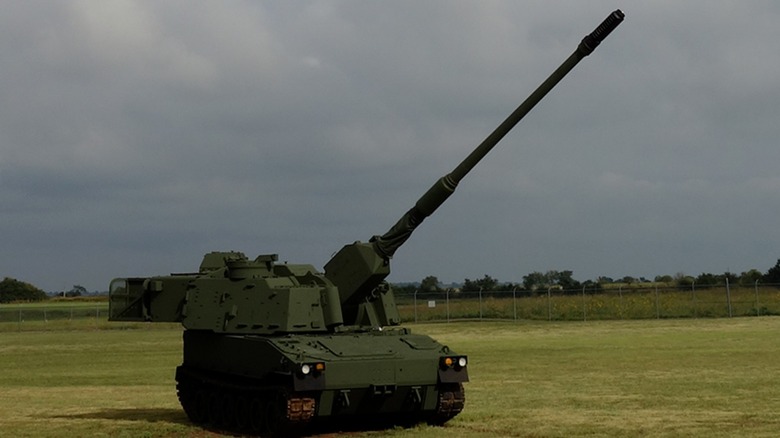The Army Is Scrambling To Install Anti-GPS Jammers In Its Artillery Systems: Here's Why
Modern warfare's use of artillery has proven vital, going back well into the 18th century, when Napoleon transitioned it from a supportive role to a decisive force on the battlefield. Of course, the systems used in today's wars are significantly more advanced than what he employed, and that's proving to be a problem. Modern self-propelled artillery systems require GPS to properly function, as it not only helps determine the target's location but also the weapon's place on the Earth relative to it.
Granted, there are older weapons that don't use GPS for this purpose, but for the United States Army, it's a vital piece of equipment. Artillery is a significant aspect of the war in Ukraine, and soon after the U.S. sent its High Mobility Artillery Rocket System (HIMARS) to the country, Russia found a way to render them almost inert. According to The Washington Post, which published a report based on a classified Ukrainian study in 2024, Russian GPS jamming successfully disrupted their guidance systems.
This resulted in the otherwise highly accurate HIMARS being "completely ineffective." The problem isn't solely affecting U.S. weapons, as self-propelled howitzers like the French CAESAR and Swedish Archer artillery systems are equally as affected by Russian jamming tech. To combat the problem, the Army and other nations are scrambling to install anti-jamming systems on their weapons, and time is of the essence, as the war in Ukraine doesn't appear to be ending anytime soon. Here's the situation on the ground as of early 2025.
The Army's plan to jam the jammers
Artillery isn't the sole target of jamming, as the Joint Direct Attack Munition-Extended Range (JDAM-ER) missile is also affected, as are Excalibur 155-milimeter shells and HIMARS-launched M30/31 rockets. The Excalibur rounds' effectiveness was rendered down to 10% accuracy after only a few months in Ukraine. Russia's proven abilities in electronic warfare have allowed the hostile nation to regain its advantage on the battlefield. To combat this, the Army is hard at work procuring and installing a countermeasure.
In the Fiscal Year 2025 budget, the Army has set aside millions for this purpose, having already purchased 376 anti-jamming kits for HIMARS. These purchases extend back two years, so the problem may have been suspected before it manifested on the battlefield. Another 284 systems for the M270A1 Multiple Launch Rocket System (MLRS) and additional HIMARS are earmarked for purchase between 2025 and 2029. The equipment being installed is called a Digital GPS Anti-Jam Receiver (DIGAR), designed and produced by BAE Systems. DIGAR was initially developed for aircraft, but it's proven highly effective in all manner of weapons.
The main difference is orienting the system to understand a terrestrial environment wherein dust is a factor. Beyond that, it's incredibly powerful, and according to an industry insider, if it failed to operate, the jammer would have to be within rifle range. While most nations are purchasing DIGARs for their artillery pieces, the United Kingdom purchased Raytheon U.K.'s Landshield anti-jamming system, which works just as well. Once these are installed and employed, Russia will have to come up with a new means of inhibiting artillery GPS targeting systems.

